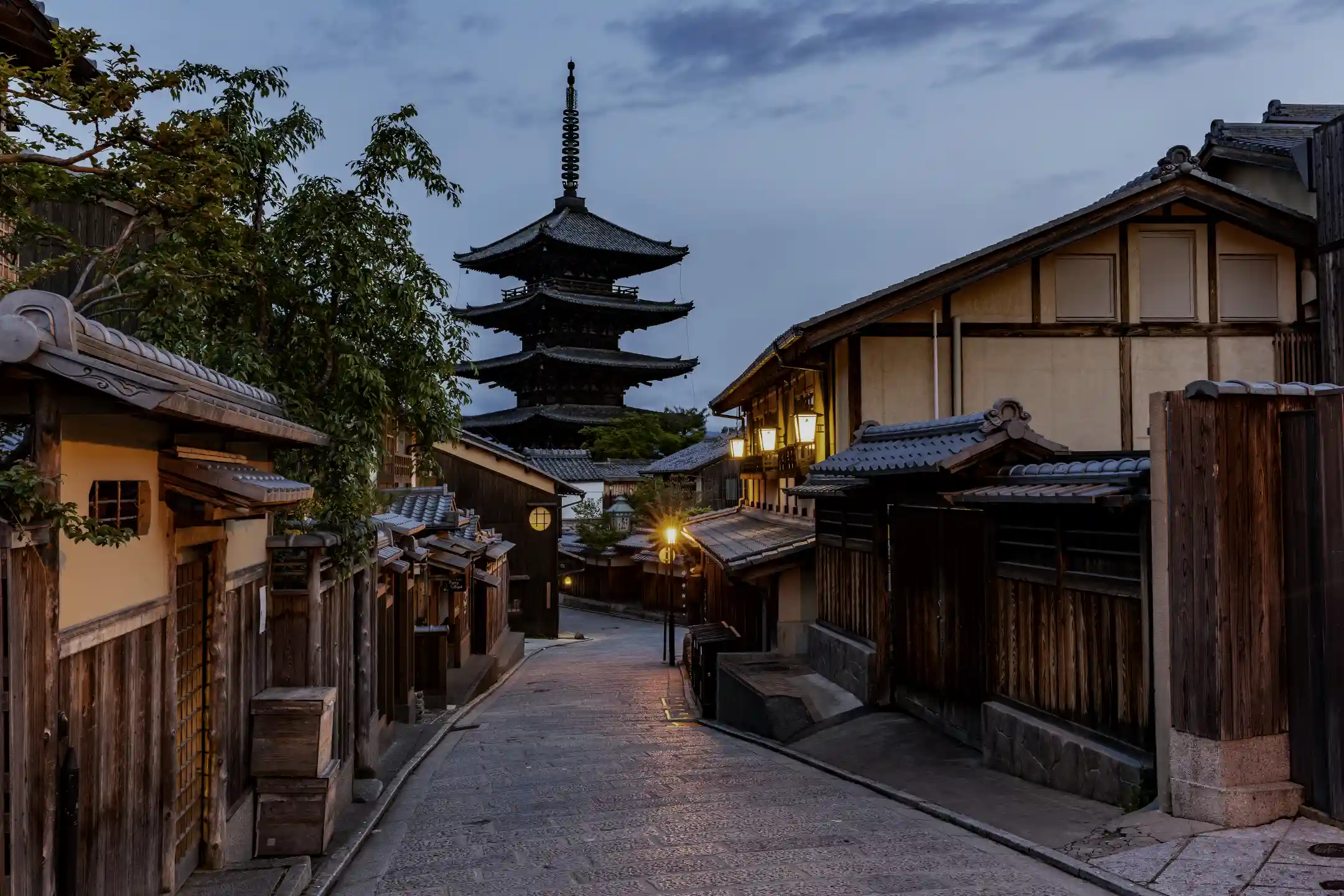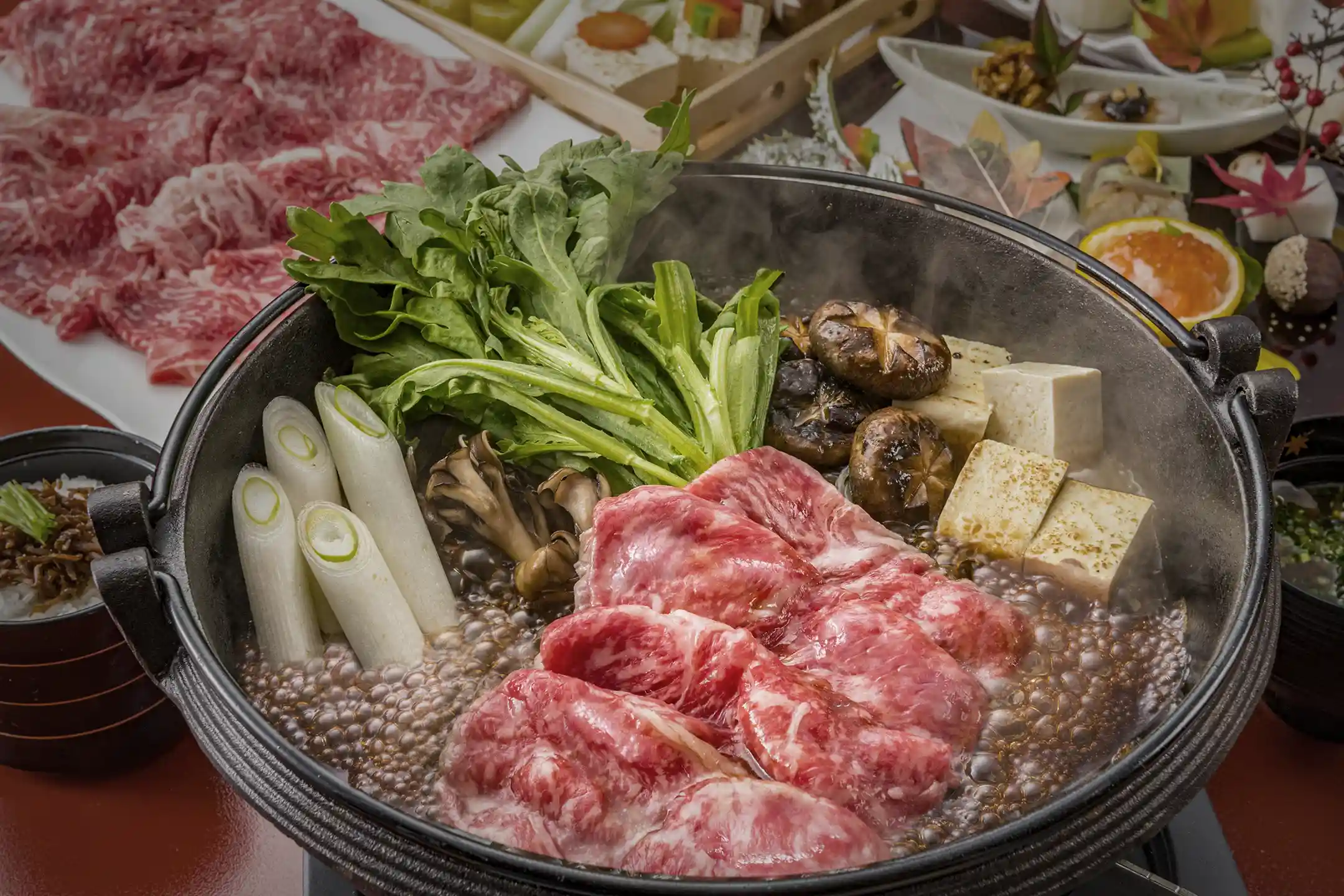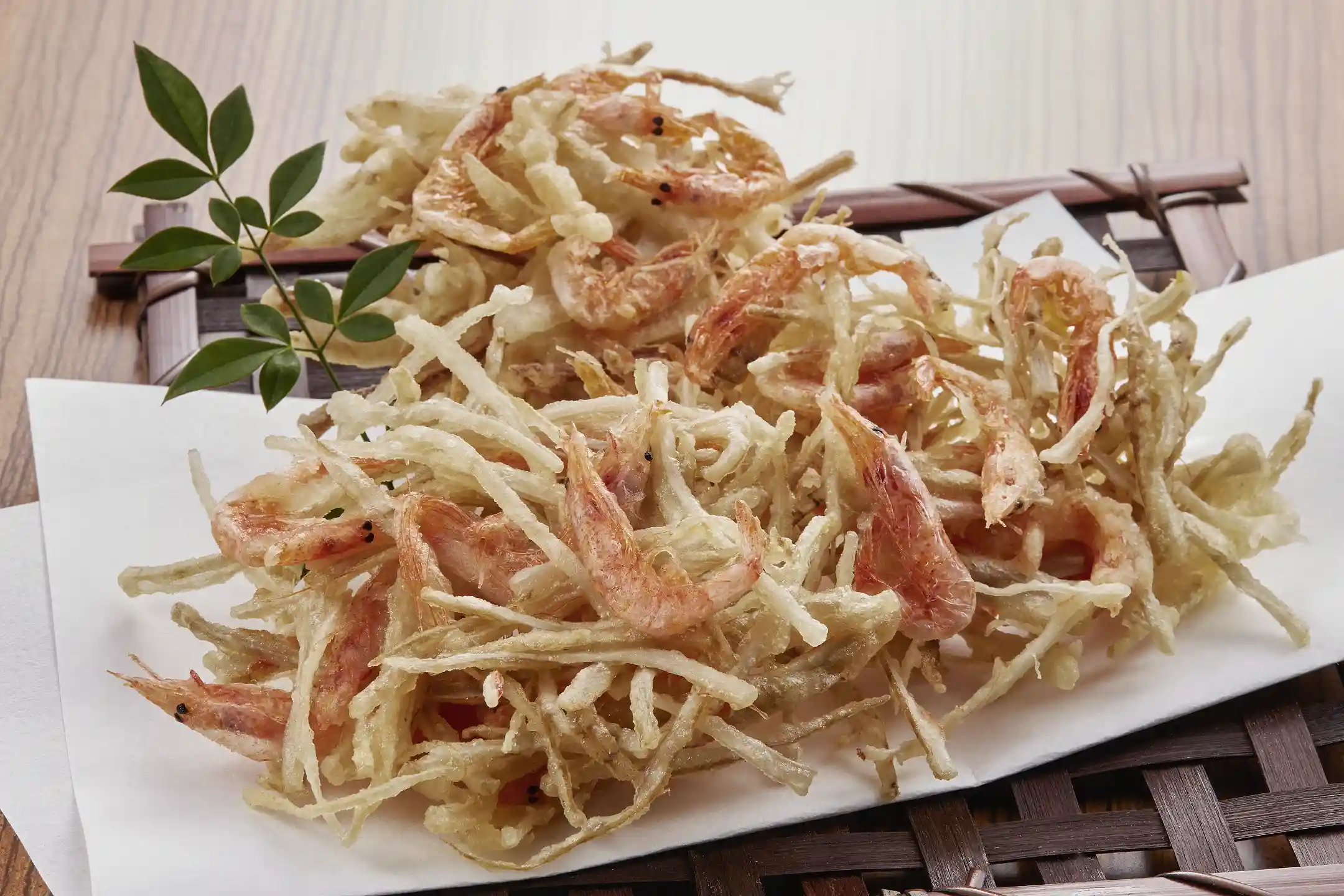If you’re wondering where to eat in Kyoto, this guide offers insights into the ancient capital’s unique culinary culture, shaped by more than a thousand years of history. From refined kaiseki cuisine and homestyle obanzai to Zen-influenced shōjin ryōri, Kyoto’s diverse dining landscape continues to evolve while preserving a deep sense of tradition and artistry.
At first glance, Western visitors may find Kyoto’s emphasis on “unspoken hospitality” and understated elegance somewhat puzzling. While portion sizes and casual communication often take center stage in Western cultures, Kyoto’s approach to dining highlights subtlety and an appreciation for detail. By embracing these cultural nuances rather than viewing them as mere “otherness,” you’ll uncover a richer understanding of Kyoto’s food scene and add greater depth to your journey.
In this blog, we’ll explore a broad range of dining options—from modern restaurants renovated out of historic machiya townhouses to long-standing ryōtei—across various areas and styles. The true allure of Kyoto lies not only in its flavors but also in its hospitality, set against a backdrop of seasonal beauty. By comparing the underlying Japanese aesthetic, spiritual views, and philosophies to those of the West, you’ll gain a more profound perspective and enrich your experience immeasurably.
What Is Kyoto’s Food Culture? – Uniqueness Born of Long History and Refined Aesthetics

Over centuries, Kyoto fostered a complex food culture influenced by social classes and religious practices. Styles like yūsoku ryōri from the imperial court, shōjin ryōri from Zen Buddhist traditions, and kaiseki ryōri evolved alongside the tea ceremony—all embodying rich historical and philosophical roots.
In the West, a “full-course” meal generally features appetizers, a main dish, and dessert. Japanese kaiseki, however, takes a different approach, offering small dishes that highlight seasonal ingredients. This reflects the Zen concept that “essence lies in simplicity,” showcasing how Kyoto treats each meal as a work of art. Many first-time visitors are surprised by the meticulous attention to the four seasons, as displayed in color schemes and tableware, which engages all five senses.
Interwoven with the tea ceremony and performing arts like Noh and Kyōgen, Japan’s spirit of omotenashi (hospitality) has thrived—communicating respect and consideration through food. Though kaiseki may appear “plain” or “small” from a purely Western perspective, understanding its cultural context elevates each dish into something far more profound.
Since “washoku” (traditional Japanese cuisine) was listed as a UNESCO Intangible Cultural Heritage in 2013, foundational elements such as dashi (soup stock) and the mottainai ethos of avoiding waste have gained global recognition. Modern trends in health and sustainability continue to renew interest in Japan’s resourceful approach. Rather than dismissing these practices as merely “unique to Japan,” examining them through frameworks like feminism or intersectionality can reveal significant insights about who creates and sustains these traditions—prompting many an “I never knew that!” moment.
Representative Kyoto Cuisine Styles to Know

Kaiseki Ryōri (Delicate Beauty Nurtured by the Spirit of the Tea Ceremony)Kaiseki ryōri traces back to the simple meals once served during tea ceremonies. The word kaiseki originally referred to a warm stone that Zen monks used to stave off hunger, reflecting the belief in minimizing excess. “Simple,” however, does not equate to “plain.” Rather, each dish demonstrates subtle elegance by maximizing natural flavors and celebrating seasonality.
During a tea gathering, multiple small courses—like a soup and three side dishes—arrive in quick succession, quite unlike a Western-style meal. This approach of “multiple small plates” is gaining popularity worldwide for its balanced, artistic way of sampling numerous flavors. When you visit Japan, take the opportunity to immerse yourself in this singular culinary worldview.

Obanzai (Home-Style and Healthy Taste of Kyoto)
Obanzai refers to the home-style cooking native to ordinary Kyoto households, rooted in seasonal vegetables, tofu, dried foods, and a mindful effort to avoid waste. Its gentle taste and healthful preparation align with Western wellness trends, making it especially popular among travelers.
Where Western households might serve a salad on a single plate, obanzai typically presents multiple small bowls, allowing you to relish different tastes in small portions. Underlying this custom is a spirit of “using limited resources wisely,” offering valuable lessons in sustainability. In its unpretentious warmth, you’ll find a distinctly Japanese hospitality that feels like coming home.

Yudōfu and Shōjin Ryōri (Vegetarian Dishes Rooted in Zen Ideals)
In a city teeming with temples, Kyoto preserves a legacy of shōjin ryōri, a vegetarian tradition guided by Buddhist principles that exclude meat and fish. Centered on tofu, yuba (tofu skin), and wheat gluten, shōjin ryōri boasts remarkable variety. Though modern Westerners often view it simply as “vegetarian cuisine,” its origins lie in monastic precepts and Zen practices.
Yudōfu (hot tofu) near Nanzen-ji Temple is a must-try, showcasing Kyoto’s signature soft tofu—made possible by the local water’s natural softness. Though its appearance is plain, the careful selection of ingredients and refined dashi create a subtle yet memorable experience. In contrast to more elaborate kaiseki meals, shōjin ryōri offers a calming simplicity that nourishes both body and spirit.
Recommended Dining Spots in Kyoto by Area
If you want to discover where to eat in Kyoto for an authentic cultural experience, the city’s diverse neighborhoods offer something for every taste. Below are some areas renowned for their distinct ambiance and culinary specialties.
Gion Area: Long-Established Kappō Restaurants and Historic Machiya Ambience
Known for its stone-paved streets lined with Kyoto’s iconic machiya townhouses, Gion epitomizes the “essence of Japan.” Stepping into a historic kappō or ryōtei can reveal much about Japanese culture—sometimes even before you taste a single dish.
Machiya, often called “eel’s beds” due to their narrow yet elongated structure, are a fascinating example of Japanese architecture emphasizing depth. Restaurants that have thrived here for centuries elevate kaiseki with carefully chosen tableware and plating. If you’re fortunate enough to enjoy a geiko or maiko performance, consider the traditions behind these formal arts, which make the dining experience all the more immersive.
Arashiyama Area: Luxurious Dining with Seasonal Scenery along the River
Famed for Togetsukyō Bridge, Arashiyama charms visitors year-round with cherry blossoms in spring and vibrant foliage in autumn. It’s increasingly popular among Western travelers looking for scenic spots to dine. Many upscale ryōtei feature private rooms overlooking the tranquil Ōi River, providing a lavish view.
Choosing a plan with a boat ride or cormorant fishing (ukai) elevates the experience even further. Japan’s tradition of synchronizing cuisine and architecture with the changing seasons allows visitors to savor the harmony of nature alongside each meal.

Ponto-chō and Kiyamachi: Savoring the Nightlife with Riverside “Kawadoko” Seating
Ponto-chō and Kiyamachi are famous for kawadoko, a summer tradition of setting up dining decks along the Kamo River. Enjoying eel dishes or creative fusion while listening to the water flow exemplifies a distinct Japanese approach to al fresco dining.
Though various regions in Japan have their own ways of beating the heat, Kyoto’s kawadoko adds a refined twist to the idea of open-air seating. The blend of foreign influences and local charm also adds a lively nighttime atmosphere, making it a must-try experience—even on a short visit.
Enjoying Sustainable Dining: Environmental Consideration × Kyoto Gourmet

Restaurants Emphasizing Local Production for Local Consumption & Organic Ingredients
The concept of mottainai—avoiding waste—has long been woven into Kyoto’s tradition of celebrating local produce. More establishments now pride themselves on using organic Kyoto-grown vegetables and partnering with traditional brewers for seasonings. Some ryōtei recognized with Michelin Green Stars go even further, reducing waste or reusing ingredients to address modern environmental challenges. While sustainable practices are gaining traction worldwide, Kyoto’s approach is unique in fusing heritage with cutting-edge ideas.

Environmentally Conscious Spaces: Blending Traditional Architecture with Modern Technology
A growing number of restaurants renovate old Kyoto machiya, pairing their timeless exteriors with modern insulation or energy-saving systems. Although Western countries also value “restoring” historic buildings, Kyoto’s renovations preserve intricate design details and employ passive architecture to harness natural light and airflow.
From a postcolonial angle, such innovation isn’t just about “importing foreign technology” but creating a sustainable future by honoring local culture. Experiencing a space where Kyoto’s traditional aesthetics exist in harmony with eco-friendly technology can be both eye-opening and thought-provoking.
Restaurants with EV Charging Spots: Collaboration with Advanced Technology
Sustainable travel depends on environmentally responsible transportation. In Kyoto, some hotels and restaurants now provide EV charging stations, ensuring long-distance visitors remain eco-conscious throughout their stay. In a city that treasures both tradition and innovation, spotting a charging station near centuries-old shrines encapsulates Kyoto’s vision of a “sustainable tourism city.”
Seeking an Upscale Atmosphere? Shops with a Focus on Interior and Design
Modernized Japanese Dining in Renovated Kominka (Traditional Houses)
Across Kyoto, many centuries-old machiya houses have found a new life as restaurants. Preserving architectural hallmarks like beams and lattice doors while adding refined lighting and interiors creates a striking blend of tradition and modern design.
Savoring Kyoto’s seasonal produce on artful tableware in these thoughtfully renovated spaces engages the senses like a trip to a museum. Although this might evoke parallels to historic European inns or castle hotels, you’ll feel a distinctly Japanese serenity here, where the act of “experiencing culture” itself becomes the highlight of your trip.
Hidden Restaurants Where You Can Enjoy an Art Collection
Some lesser-known restaurants double as art galleries, showcasing modern pieces or antiques that harmonize with the dining space. Unlike many Western gallery restaurants, the artwork here often feels fully integrated—sometimes even conceptually paired with the menu.
Japan’s long-standing idea that “tableware is part of the artwork” endows a single tea bowl with the history and intentions of its creator, making the union of culinary tradition and contemporary art feel especially natural. Approaching it with a mindset of “mutual respect to avoid cultural appropriation” leads to a more profound shared appreciation.
Deepening Your Taste of Kyoto Through Experiences – Cultural Classes & Workshops
Cooking Classes – Learning Dashi Techniques and the Art of Presentation in Kyoto Cuisine
For hands-on insights into Kyoto’s culinary heritage, consider a cooking class. While making dashi from kombu and katsuobushi is second nature in Japan, it can be revelatory for Western participants. Classes also emphasize plating techniques, such as thoughtful use of empty space and visual references to the seasons. Engaging with these design principles illuminates the deeper visual aesthetic behind washoku.
Japanese Tea Tasting – Experiencing the History and Rituals of the Tea Ceremony
Attending a tea tasting or simplified tea ceremony reveals the etiquette of whisking matcha and handling tea bowls. More than just drinking tea, it’s a cultural exchange rooted in Zen philosophy. Unlike a Western “coffee break,” tea ceremonies encourage a tranquil, mindful pause—a window into a more contemplative state of mind.

Wagashi Making – Experiencing “Japanese Art” That’s Visually Stunning
Crafting wagashi (traditional confections) involves molding sweet bean paste into seasonal motifs like blossoms or foliage, turning each piece into a small work of art. Every step carries cultural meaning, illuminating how colors, shapes, and ingredients mirror broader themes in Japanese history. It’s a sweet (and aesthetically pleasing) way to deepen your cultural perspective.
Essential Etiquette and Basics for Enjoying Kyoto’s Cuisine
Booking Tips and Cautions – Early Reservations for Popular Restaurants
Kyoto’s famous restaurants often book out quickly, so start planning as soon as you know your travel dates. Top ryōtei or Michelin-starred spots may require reservations weeks or even months in advance. If needed, enlist a hotel concierge or reservation service.
Being Mindful of Dress Codes – Attire for Ryōtei and Kappō
While strict dress codes are not always enforced, overly casual clothing can be frowned upon. You may have to remove your shoes in tatami rooms, so dress neatly and consider “smart casual” as a baseline. Adopting a more subdued style aligns better with the understated elegance of Kyoto’s traditional establishments.
Finding Vegetarian and Vegan-Friendly Restaurants
Although Kyoto’s shōjin ryōri offers vegetarian options, many dishes still use fish-based dashi. If you need to avoid all animal products, confirm in advance whether fully meat- and fish-free options are available. With a growing influx of Western visitors, more cafés and ryōtei now offer vegan menus, allowing you to honor both Japanese food culture and your dietary needs.
Conclusion – Education and an Enriched Journey Through Kyoto’s Dining Spots
Kyoto’s culinary scene, shaped by a thousand-year history and a refined aesthetic, stretches from kaiseki and obanzai to shōjin ryōri and beyond. In areas like Gion, Arashiyama, and Ponto-chō, you’ll encounter architectural heritage, cutting-edge sustainability, and the seamless melding of tradition and technology. Through lenses like postcolonial theory or cultural relativism, each meal can unveil deeper dimensions of Japanese culture.
By engaging in cooking classes, tea ceremonies, or wagashi workshops, you’ll experience not only exquisite flavors and artful presentations but also the etiquette and philosophy underpinning Kyoto’s cuisine. A bit of preparation—understanding dress codes, booking tips, and dietary considerations—ensures a smoother dining adventure.
Ultimately, your visit to Kyoto offers much more than just tasty food; it’s a chance to explore the rich tapestry of history, spirituality, and creativity woven into each dish. If you’ve been wondering where to eat in Kyoto, we hope this guide leads you to unforgettable moments of cultural discovery, hospitality, and culinary delight.
Author Bio

Maoko Shibuya
Content Planner & Writer Holding a master’s in Digital Marketing and experience across global markets, Maoko blends international perspective with a deep appreciation for Japan’s cultural heritage. She plans and writes compelling narratives that reveal the country’s beauty and depth, drawing on her passion for travel, local cuisine, and cultural exploration.





/Kazunoko%20Matsumae-zuke%20(Herring%20Roe%20and%20Seafood%20Pickles).webp)